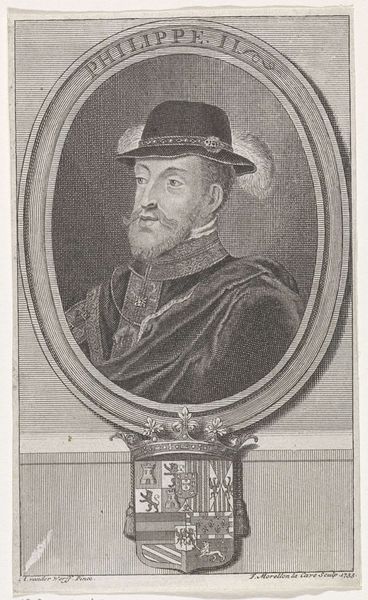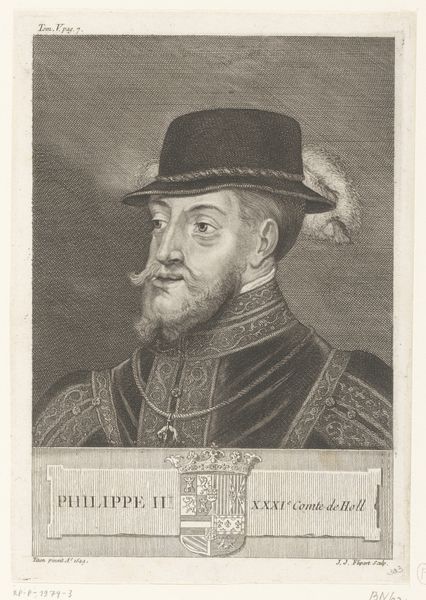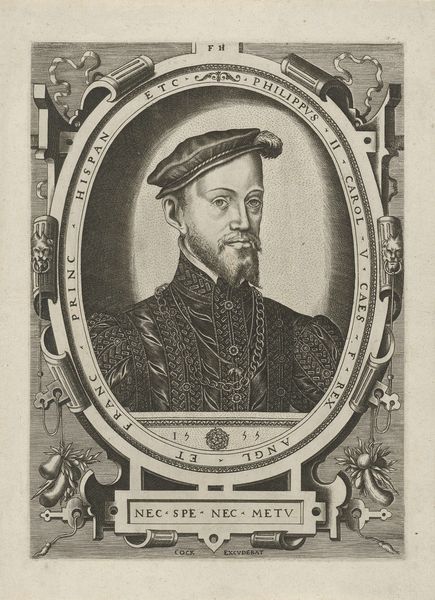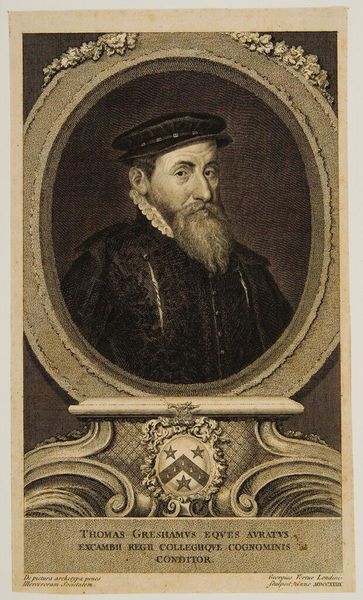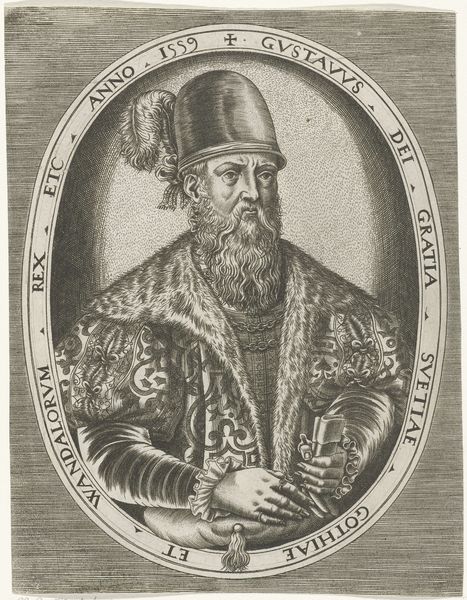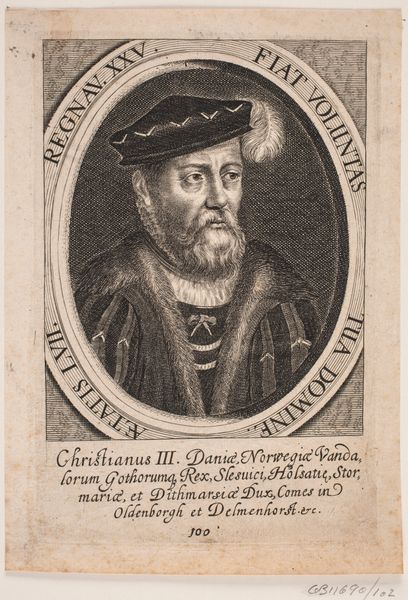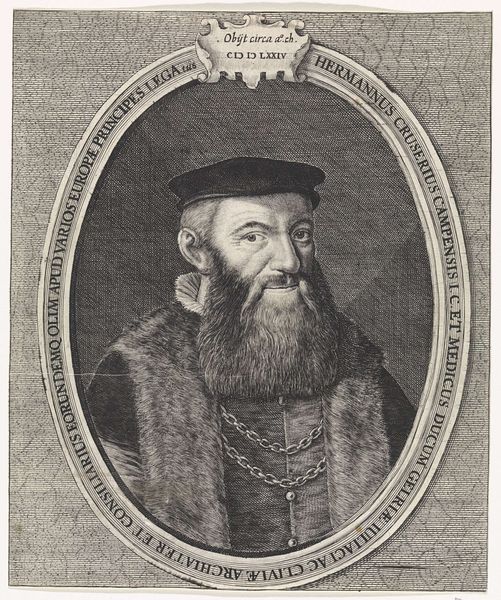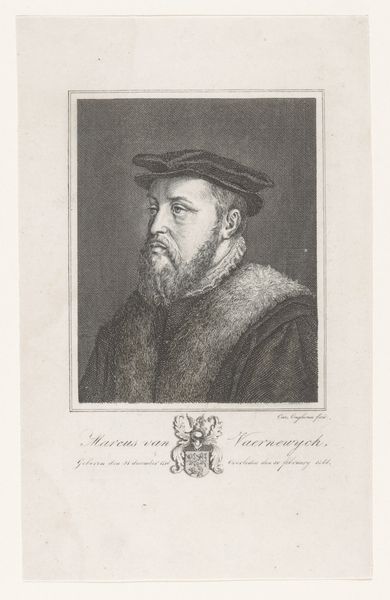
engraving
#
portrait
#
baroque
#
old engraving style
#
figuration
#
line
#
history-painting
#
engraving
Dimensions: height 406 mm, width 297 mm
Copyright: Rijks Museum: Open Domain
Curator: This engraving from 1650 is titled *Portret van Filips II, koning van Spanje,* and was created by Cornelis Visscher. It resides here at the Rijksmuseum. Editor: My immediate reaction is one of severe constraint. The visual field is tightly packed, the subject is encased, and his expression, though refined, hints at a certain tension. Curator: It's exemplary of Baroque portraiture, isn't it? Look at the meticulous rendering of texture—the velvet hat, the sheen on his doublet, the fine lines articulating his face. It's a study in detail. The oval frame enhances the dramatic impact. Editor: I think there's a specific, potentially propagandistic tension here, as it situates Philip II. Consider how Philip's reign was a time of enormous strife in the Netherlands, characterized by the persecution of Protestants and the long, devastating Eighty Years' War for Dutch independence. This engraving presents us with an image meant to legitimize power amid conflict, obscuring the violent reality through visual elegance. Curator: But the technique! Visscher truly masters the art of the line. Look at how he builds up the tonal range through hatching and cross-hatching, creating depth and volume with incredible subtlety. Editor: Yes, the engraving is undeniably skillful, but those very formal elements are part of the ideological project of Baroque art: to awe and persuade through spectacle, whether earned or not. The ornate Latin inscription serves a similar purpose, glorifying the man. Curator: Well, seeing it through that historical lens gives the technical virtuosity another layer, doesn’t it? Visscher’s attention to detail is then a conscious choice aimed to ennoble Philip’s presence. Editor: Precisely. Understanding this historical context, alongside the aesthetic elements, exposes the strategies of power embedded within even the most seemingly straightforward portrait. Curator: A very helpful reminder that even a seemingly neutral portrait speaks volumes. Editor: Indeed, a constant interplay of what is present, absent, and actively obscured, as one analyzes art!
Comments
No comments
Be the first to comment and join the conversation on the ultimate creative platform.
